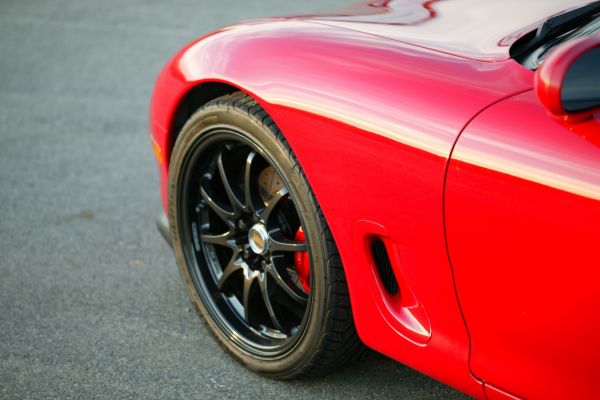The compact SUV segment has become a battlefield for automakers striving to blend performance, comfort, technology, and design into one attractive package. Among the top contenders in this category, the Mazda CX-5 and Hyundai Tucson stand out for their impressive offerings. If you’re deciding between these two popular crossovers, understanding their key differences and advantages will help you make an informed decision. This article explores the Mazda CX-5 vs Hyundai Tucson debate, offering a comprehensive comparison that highlights what sets each vehicle apart and which one might suit your lifestyle better.
Design and Aesthetic Appeal
When it comes to design, the Mazda CX-5 exudes a sense of elegance and sophistication that few competitors can match. Mazda’s signature “Kodo” design philosophy emphasizes flowing lines, a dynamic stance, and a premium aesthetic. The CX-5 has a sleek, almost athletic profile that appeals to those who appreciate a refined, upscale look in a compact SUV.
On the other hand, the Hyundai Tucson brings a bold and futuristic design to the table. Its angular exterior, aggressive front grille, and distinctive lighting elements give it a more adventurous and modern appeal. Hyundai has taken risks with the Tucson’s design language, and it pays off by offering a look that immediately sets it apart from other vehicles in its class. While the Mazda CX-5 leans toward luxury, the Tucson embraces a trend-setting, edgy appearance.
Interior Comfort and Features
Step inside the Mazda CX-5, and you’re greeted with a cabin that feels remarkably premium for its price point. The interior materials are top-notch, with soft-touch surfaces and high-quality finishes throughout. Mazda has prioritized driver-centric ergonomics, creating a layout that feels intuitive and elegant. The CX-5’s seats are supportive, and the cabin remains quiet even at highway speeds, offering a serene driving experience.
In contrast, the Hyundai Tucson also impresses with a spacious, tech-laden interior. Its layout is modern and functional, with an emphasis on digital interfaces. The available panoramic sunroof, ambient lighting, and expansive cargo space make it a compelling option for families or tech enthusiasts. Hyundai includes a larger infotainment screen in higher trims, along with features like wireless charging and dual-zone climate control. While both SUVs are comfortable, the Tucson leans more toward technology and versatility, whereas the CX-5 emphasizes craftsmanship and luxury.
Performance and Driving Dynamics
Driving pleasure is where the Mazda CX-5 truly shines. Known for its responsive steering and engaging handling, the CX-5 delivers a dynamic experience rarely found in this segment. Even the base engine provides adequate power for daily driving, but those seeking extra performance can opt for the turbocharged variant, which brings a more spirited ride. Mazda’s focus on providing a connected driving experience is evident, making the CX-5 ideal for those who value the journey as much as the destination.
The Hyundai Tucson, while not as sporty, offers a composed and smooth ride. It prioritizes comfort over performance, with a suspension setup designed to absorb bumps and road imperfections. The Tucson offers multiple powertrain options, including a hybrid and a plug-in hybrid, which adds to its appeal for environmentally conscious drivers. Though it lacks the athletic edge of the Mazda, it compensates with efficiency and a relaxed driving demeanor.
Technology and Infotainment
In the battle of tech, the Hyundai Tucson takes the lead with its futuristic features and larger digital displays. Its infotainment system is intuitive and responsive, with easy smartphone integration through Apple CarPlay and Android Auto. Some models even offer voice recognition and advanced driver assistance systems that push the envelope in terms of convenience and safety.
Mazda, on the other hand, takes a more traditional yet refined approach. The CX-5’s infotainment system, while slightly more conservative in design, remains user-friendly and functional. It includes all the expected connectivity options but opts for a rotary controller instead of a touchscreen in some configurations, which some drivers find more tactile and less distracting. In terms of safety, both vehicles offer a suite of advanced features, including adaptive cruise control, lane-keeping assist, and forward collision warning.
Fuel Efficiency and Practicality
Fuel economy is another essential factor in the Mazda CX-5 vs Hyundai Tucson comparison. The Hyundai Tucson’s hybrid and plug-in hybrid options give it a significant edge for drivers prioritizing efficiency. The standard gasoline engine also delivers competitive mileage, making the Tucson a well-rounded choice for long commutes or frequent travel.
The Mazda CX-5, although not available in a hybrid version, still offers decent fuel efficiency, especially with its base engine. However, the turbocharged version tends to consume more fuel, which may be a consideration for budget-conscious buyers. In terms of cargo space, the Tucson offers more room behind the rear seats, giving it an advantage for hauling luggage, groceries, or gear.
Reliability and Ownership Costs
Both the Mazda CX-5 and Hyundai Tucson are backed by strong reputations for reliability. However, Hyundai edges out Mazda slightly in this regard due to its industry-leading warranty coverage. Hyundai offers a 10-year/100,000-mile powertrain warranty, which provides added peace of mind for long-term ownership. Mazda’s warranty is more conventional but still respectable, and the brand’s attention to quality often results in fewer repairs over time.
When it comes to maintenance and repair costs, both vehicles are relatively affordable. Routine service is straightforward, and replacement parts are readily available. The Tucson’s hybrid models may have slightly higher maintenance costs due to their more complex powertrains, but the fuel savings often offset this difference.
Final Verdict: Which SUV is Right for You?
Choosing between the Mazda CX-5 and Hyundai Tucson ultimately comes down to your priorities. If you’re seeking a compact SUV that combines athletic performance, elegant design, and a near-luxury interior, the Mazda CX-5 is the clear winner. It offers a driving experience that’s more engaging and a cabin that feels upscale without breaking the bank.
On the other hand, if technology, practicality, and fuel efficiency top your list, the Hyundai Tucson makes a compelling case. With its futuristic styling, spacious interior, and multiple powertrain options—including hybrid variants—it caters to a wide range of lifestyles and preferences. The Tucson’s bold approach to design and generous standard features give it a strong presence in the crowded compact SUV market.
Conclusion
In the debate of Mazda CX-5 vs Hyundai Tucson, both vehicles emerge as excellent choices with their own strengths and appeals. The CX-5 caters to drivers who value refinement and road feel, while the Tucson offers innovation, comfort, and forward-thinking design. Your final decision should align with your specific needs—whether that’s thrilling performance or modern versatility. Either way, you’ll be driving away in one of the best compact SUVs available today.





